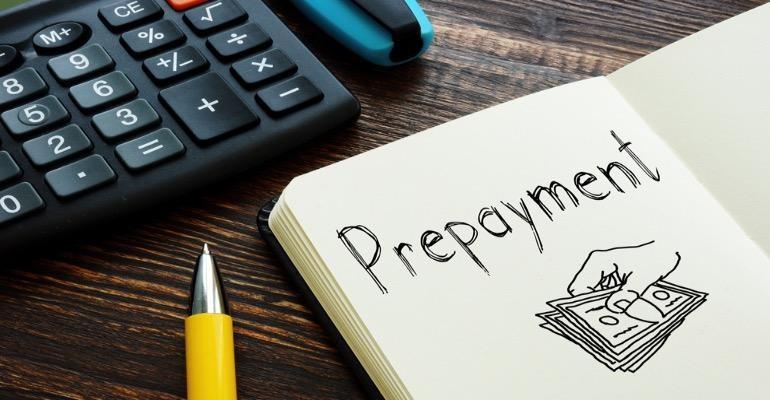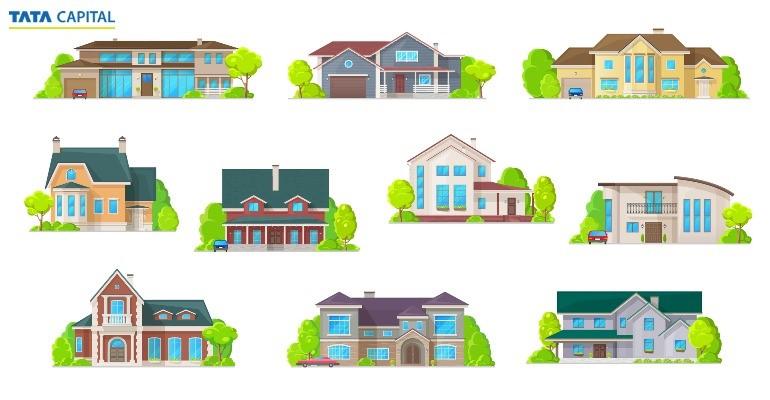

Home loans help us finance our dream of providing our loved ones with a comfortable and secure living space. However, home loans are long-term commitments and require you to pledge the home you build as collateral to the lender. These long-term loans often have a repayment tenure lasting 15-20 years and sometimes even more. Long tenures come with high interest, so foreclosing your home loan is a wise decision as it gives you flexibility in future financial planning. Lifting off the burden of monthly mortgage payments will enable you to direct your cash flow towards other investments and focus on other financial goals. Closing a loan within the predetermined tenure will also improve your credit score. Additionally, you can enjoy debt-free home ownership as there are no financial obligations to your lender.
While foreclosing your home loan can offer numerous benefits, understanding the intricacies of loan foreclosure can help you make informed financial decisions. This blog will cover everything you need to know about foreclosing your home loan, from home loan foreclosure charges offered by different lenders to points to remember while foreclosing your loan.
Following the process of closing your loan is essential to avoid future problems. Here are the different types of home loan closures:
1. Foreclosure– Foreclosure of a home loan refers to closing the entire loan amount before the end of the repayment tenure.
2. Regular closure– Regular closure refers to closing the loan by timely monthly EMIs till the end of repayment tenure.
3. Bad loan closure– Lenders might waive the fee if a borrower cannot repay a part of the loan. However, in most situations, the lender will claim the collateral and call the guarantor into question.
3. Settled loan closure– A settled loan closure happens when a borrower cannot pay off the loan amount. In this case, the lender gives the borrower a lower rate to pay the loan’s overdue amount. The lender then waives the outstanding balance.
The lender imposes home loan foreclosure charges when you repay your loan before the decided repayment tenure. Preclosure charges for home loans intend to compensate the lender for the potential income they may have incurred from the interest. These charges vary from lender to lender, so read all the documents carefully and closely analyse the loan terms and costs.
The lender calculates home loan foreclosure charges based on payment penalty percentage, interest on the amount you have prepaid, the tenure of your loan and whether they have fixed or floating interest rate. Reviewing your loan agreement to understand these charges and comparing different lenders is prudent.
Home loan foreclosure charges also depend on whether the borrower repays the loan with their funds or through another funding source. Some borrowers may consider refinancing with a different lender because of attractive interest rates. Here is how this works:
1. The borrower will get loan approval from their desired lender.
2. The lender will then close the home loan by repaying the loan amount to the existing lender.
3. The borrower has to repay the loan to their new lender at the new interest rate.
Financial institutions have different home loan foreclosure charges for individuals and non-individuals. It is prudent to shop around and understand your financial needs and repayment ability before committing to a loan.
Home loan foreclosure charges apply when the borrower repays the entire loan amount. Pre-payment charges are applied if the borrower repays a part of the total loan amount. Some financial institutions do not have any home loan foreclosure charges, while others base it on whether the borrower is an individual or non-individual.
Below are the home loan foreclosure and pre-payment charges by different financial institutions:
| Financial institutions | Home loan foreclosure charges | Home loan pre-payment charges |
| TATA Capital | Nil if paid using own funds | Nil if paid using own funds |
| HDFC | Nil | Nil |
| Indiabulls | Nil | Nil |
| Sundaram Home Finance Limited | Nil | Nil |
| Aditya Birla Housing Finance Limited | Nil for individual borrowers 2% of outstanding principal for non-individual borrowers | Nil |
| Gruh Finance Limited | Nil | Nil |
| DHFL | Nil for individual borrowers 2% of outstanding principal for non-individual borrowers | Nil for individual borrowers 3% of the outstanding principal for non-individual borrowers |
| LIC Housing Finance Limited | Nil to 2% of the prepaid amount | Nil to 2% of the prepaid amount |
| Federal Bank | Nil to 3% of the outstanding amount | Nil to 3% of the outstanding amount |
| State Bank of India | Nil | Nil |
| Axis Bank | Nil | Nil |
| India Shelter Finance Corporation | Nil | Nil |
| Reliance Home Finance Limited | 2% – 5% of the outstanding amount | 2% – 5% of the outstanding amount |
| Kotak Mahindra Bank | Nil | Nil |
| Central Bank of India | Nil | Nil |
| AAVAS Finances Limited | Nil | Nil |
| Yes Bank | Nil for floating interest rates 4% of the outstanding amount for fixed interest rates | Nil for floating interest rates 4% of the outstanding amount for fixed interest rates |
| Indian Overseas Bank | Nil | Nil |
| Bank of India | Nil | Nil |
| Dhanlaxmi Bank | Nil | Nil |
| Andhra Bank | Nil | Nil |
| Bank of Baroda | Nil | Nil |
| IDBI Bank | Nil | Nil |
| Bank of Maharashtra | Nil | Nil |
| Dena Bank | Nil | Nil |
| PNB Housing Finance Limited | Nil | Nil for individual borrowers 2% of prepaid amount for non-individual borrowers |
After analysing different home loan foreclosure charges, here are the steps you can follow to close your loan before the repayment term ends:
Step 1: Visit your lending institution.
Step 2: Submit all the loan-related documents.
Step 3: Pay the loan amount and the home loan foreclosure charges.
Step 4: Collect your home loan foreclosure letter
Once you have paid home loan foreclosure charges, ensure to collect the following documents from the lender:
1. In the case of the unfortunate demise of the borrower, collect the original property documents in the power of attorney format from the lender.
2. To collect the original property documents, the legal nominee must write an application to the lender.
3. A letter of abdication is necessary to surrender the property to the legal nominee.
Following the process of closing a loan properly is just as crucial as following the process of borrowing a loan. Here are some points to remember while foreclosing your home loan:
1. Collecting all the documents is necessary. While availing of a home loan, the original property documents are given to the lender. Ensure to collect those documents after foreclosing your loan.
2. The No Objection Certificate proves you have closed your loan. It is an essential document as it helps you with future loans.
3. Closing a loan on time adds to your credit score. Remember to ask the lender to update your credit score to boost your creditworthiness.
4. Carry your government ID proof, as it is necessary to close your loan.
5. Also, carry your chequebook to pay the final settlement and home loan foreclosure charges of the home loan.
6. Collect the acknowledgement of the final payment from the lender. Ensure that it is duly stamped and signed by the official.
Understanding the foreclosure charges of home loans is essential to making wise financial decisions. Understanding all the costs, interests and fees associated with the loan from your chosen lender is prudent so that you can plan your finances seamlessly. You can easily achieve your long-term financial goals by carefully analysing your lender.
Home loan foreclosure can help lift the weight of long EMIs and save interest, improving the overall cash flow. However, ensure that you read and discuss all the loan-related terms with your lender in advance. Before foreclosing on your home loan, consult your lender, assess your financial situation and talk to an expert. Forecasting the potential long-term impacts on your finances can help you achieve your future aspirations.
While financing your dreams, visiting different lenders and examining their services is crucial. TATA Capital is a trusted financial service provider to help you streamline all your funding needs, from personal and medical loans to overdraft facilities and investing in mutual funds.
Home loan foreclosure charges are the fees imposed by the lender on the borrower if the borrower decides to repay the loan amount before the end of the predetermined repayment tenure.
Lenders impose foreclosure charges in home loans to compensate the income they may have earned from the interest if the borrower repaid the loan amount according to the decided repayment tenure.
Foreclosure home loan charges are calculated based on factors like fixed or floating interest rates, prepayment penalty percentage, loan repayment tenure, and other additional charges, if applicable.
Popular Blogs
Explore more about Loans
 Which Is Better: Top-up Home Loan Vs. Balance Transfer
Which Is Better: Top-up Home Loan Vs. Balance Transfer All About Plot Loan Tax Benefits
All About Plot Loan Tax Benefits Difference Between Home Extension Loan And Home Loan Extension
Difference Between Home Extension Loan And Home Loan Extension What is the difference between a Villa, Bungalow, and Duplex apartment?
What is the difference between a Villa, Bungalow, and Duplex apartment?